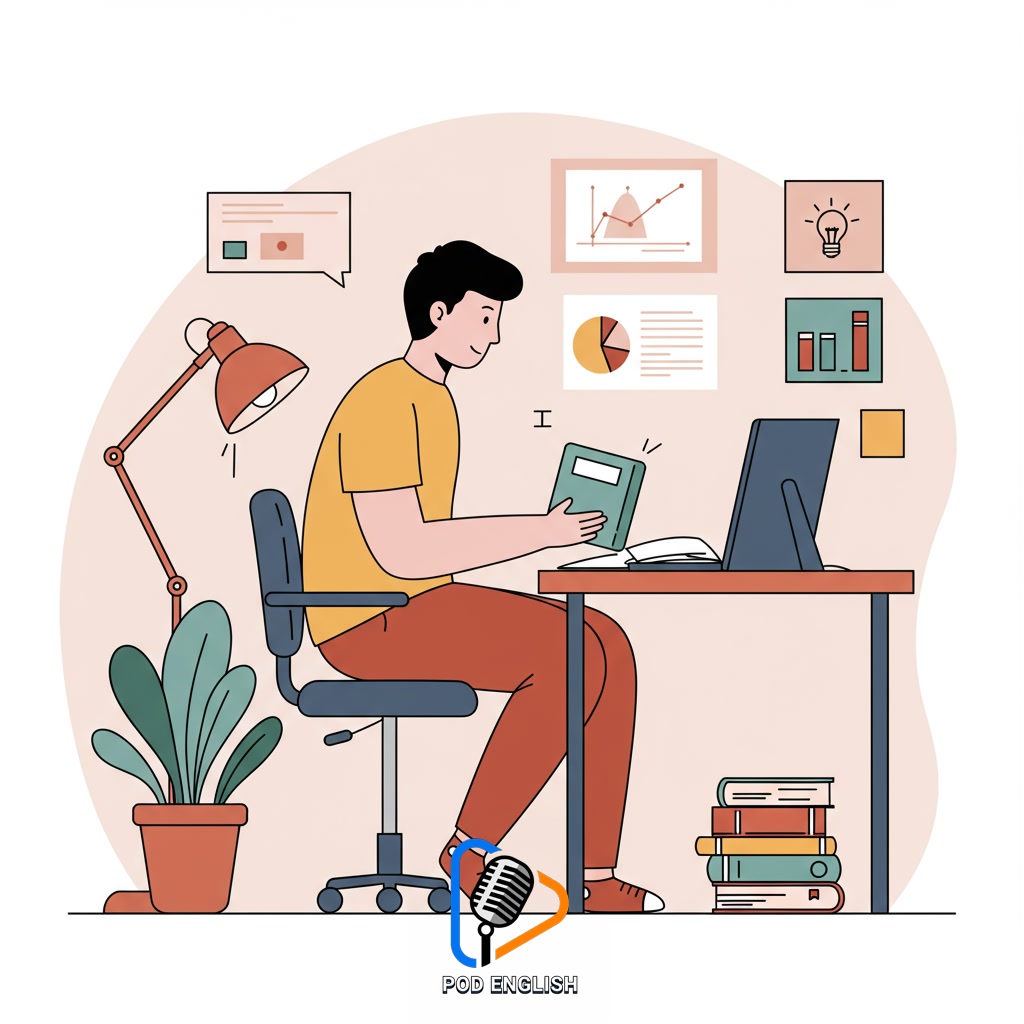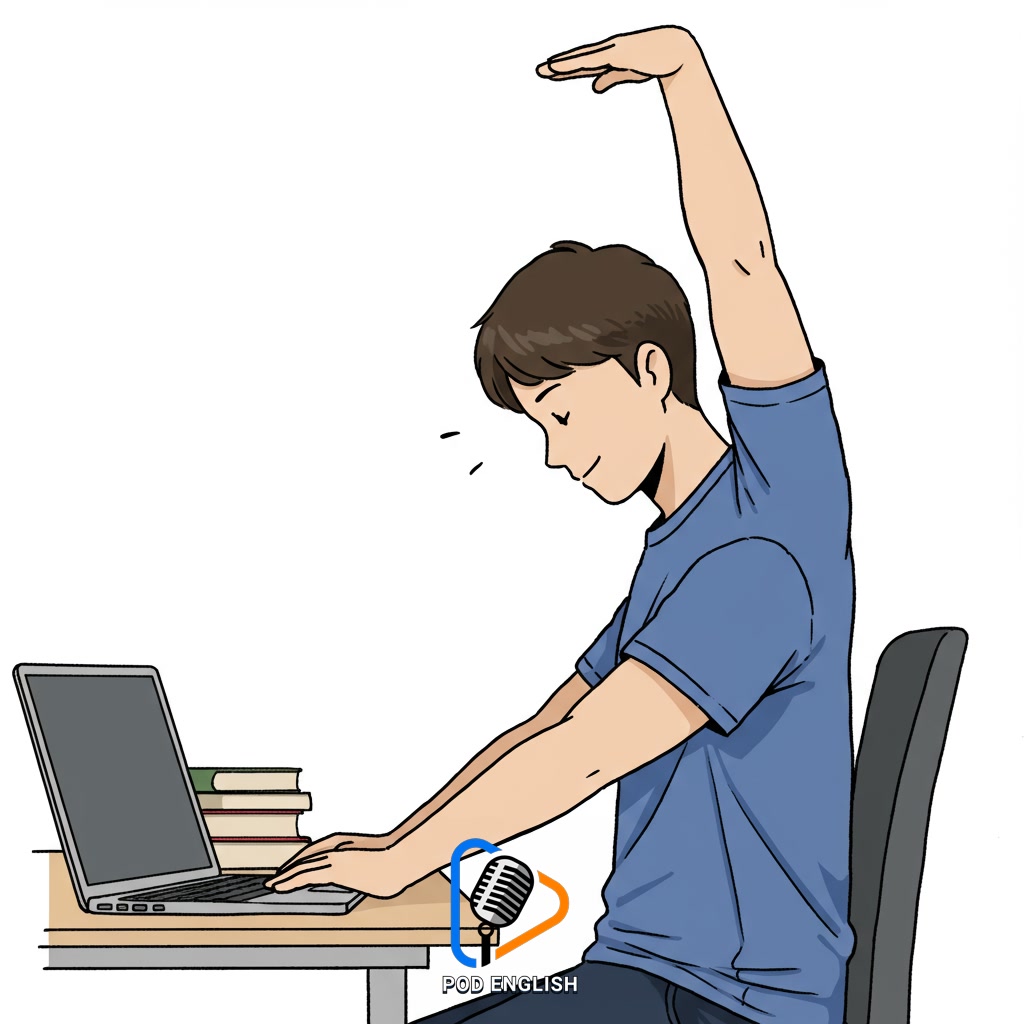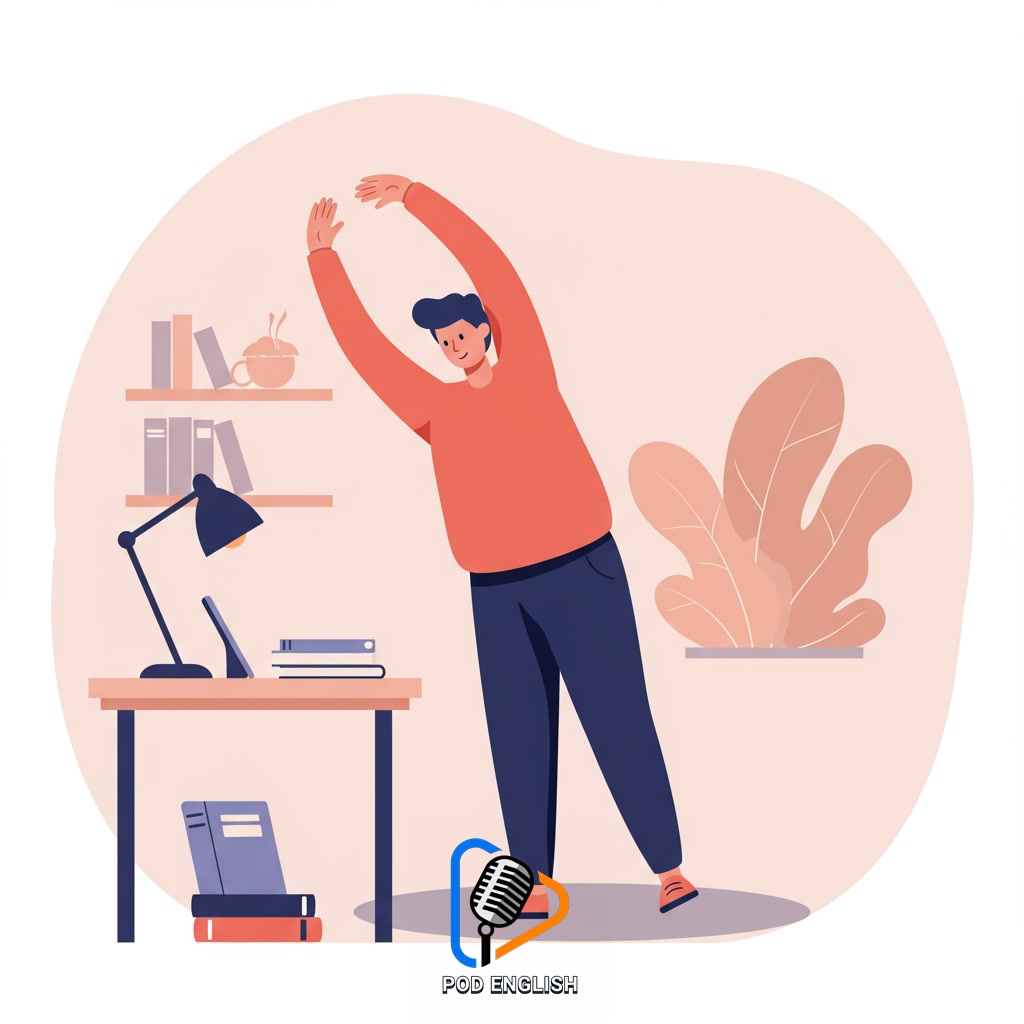Learn English
Daily Stretching for English Learners: Better Posture, Sharper Focus

Daily stretching offers significant benefits for those learning English. Engaging in regular stretching can lead to improved physical posture, which in turn supports better concentration during study sessions. These simple exercises also have the potential to enhance mental focus and attention span. Integrating daily stretching into your routine can contribute to a more effective and comfortable English learning journey.
Table of Contents
- Section 1: Introduction: The Sedentary Challenge of Learning English
- Section 2: The Brain-Body Connection: Why Stretching Helps Focus
- Section 3: Improved Posture and Reduced Fatigue for Longer Study Sessions
- Section 4: Simple Daily Stretches for English Learners (Desk & Quick Breaks)
- Section 5: Integrating Stretching into Your English Learning Routine
- Section 6: Conclusion: Stretch for Better English Learning and Wellbeing
Section 1: Introduction: The Sedentary Challenge of Learning English
Learning English is a rewarding journey, but it often requires spending significant time sitting down. Whether you are reading grammar books, watching educational videos, practicing writing on a computer, or attending online classes, these activities typically involve long periods of being sedentary. This lack of movement can present a challenge to both your physical well-being and your mental focus. Sitting for extended durations can lead to stiffness in your muscles, poor posture, and discomfort. Furthermore, remaining stationary for too long can make it harder to maintain concentration and attention during study sessions. Recognizing this common challenge is the first step towards finding ways to make your English learning experience more comfortable and effective.

Section 2: The Brain-Body Connection: Why Stretching Helps Focus
Building on the idea of spending significant time sitting while learning English, it’s crucial to understand the direct link between your physical state and your mental capacity. Prolonged periods of sitting can lead to stiffness, particularly in the neck, shoulders, and back, and can impede healthy circulation. This physical discomfort isn’t merely annoying; it sends signals to your brain that can create distractions and reduce your cognitive efficiency. The brain and body are intricately connected; tension in one area affects the other. By incorporating simple stretching, you help release physical tension, improve blood flow—including to the brain—and create a state of greater physical ease. This relief allows your mind to be less preoccupied with bodily discomfort and more available to focus on the task at hand, like comprehending complex English grammar or remembering new vocabulary.

Section 3: Improved Posture and Reduced Fatigue for Longer Study Sessions
Prolonged periods of sitting while engrossed in English study can significantly impact physical comfort and endurance. Poor posture, a common consequence of long hours at a desk, strains muscles in the back, neck, and shoulders, leading to discomfort and premature fatigue. This physical strain distracts from learning and shortens effective study time. By consciously improving posture, perhaps through regular stretching breaks, the body experiences less stress. Reduced muscle tension and better alignment translate directly into decreased physical fatigue, allowing you to maintain focus and concentration on your English materials for extended periods. This improved physical state supports longer, more productive study sessions, making your English learning journey more efficient and less taxing on your body.

Section 4: Simple Daily Stretches for English Learners (Desk & Quick Breaks)
To counteract the effects of prolonged sitting and improve your posture while studying English, incorporating simple daily stretches during short breaks is highly effective. These aren’t complicated yoga poses; they are quick movements you can do right at your desk or standing up for a minute or two. Think of gentle neck rolls to release tension, shoulder shrugs to loosen upper back muscles, and wrist stretches to ease strain from typing or writing notes. Even a simple seated forward bend can help stretch the spine. Regularly performing these easy stretches helps reduce stiffness, improves blood flow, and makes you feel more comfortable. This physical relief directly contributes to better concentration and focus, allowing you to absorb and practice English more effectively without the distraction of discomfort.

Section 5: Integrating Stretching into Your English Learning Routine
Integrating simple stretching into your English study schedule is easier than you think. Instead of long, complicated sessions, aim for short, frequent breaks. For example, dedicate just 5 minutes every hour to stand up, walk around briefly, and perform a simple stretch like reaching for the sky or gently twisting your torso. You can do this right at your desk or in your study space. This small pause not only relieves muscle tension but also helps reset your mind, making it easier to return to your English materials with renewed focus and energy. Make it a consistent part of your learning routine, just like reviewing vocabulary or practicing pronunciation.

Section 6: Conclusion: Stretch for Better English Learning and Wellbeing
In conclusion, incorporating simple, short stretching breaks into your daily routine offers significant benefits for your English learning journey and overall wellbeing. By improving your physical posture and reducing tension, stretching helps you maintain better focus and concentration during study sessions. This enhanced physical comfort supports more effective engagement with new vocabulary and grammar. More than just aiding learning, these mindful movements contribute to reduced stress and increased energy, fostering a positive state for consistent practice. Make stretching a regular part of your day – it’s a small investment of time that pays dividends in both your English proficiency and your general health.














